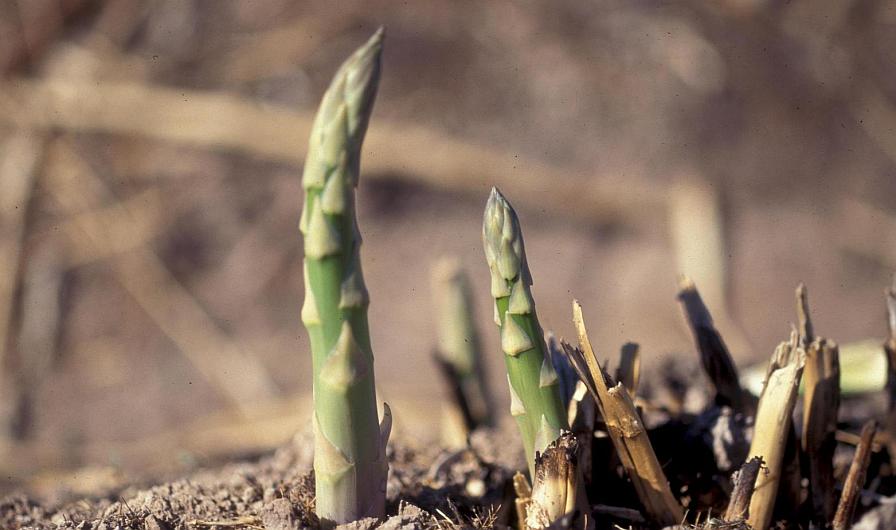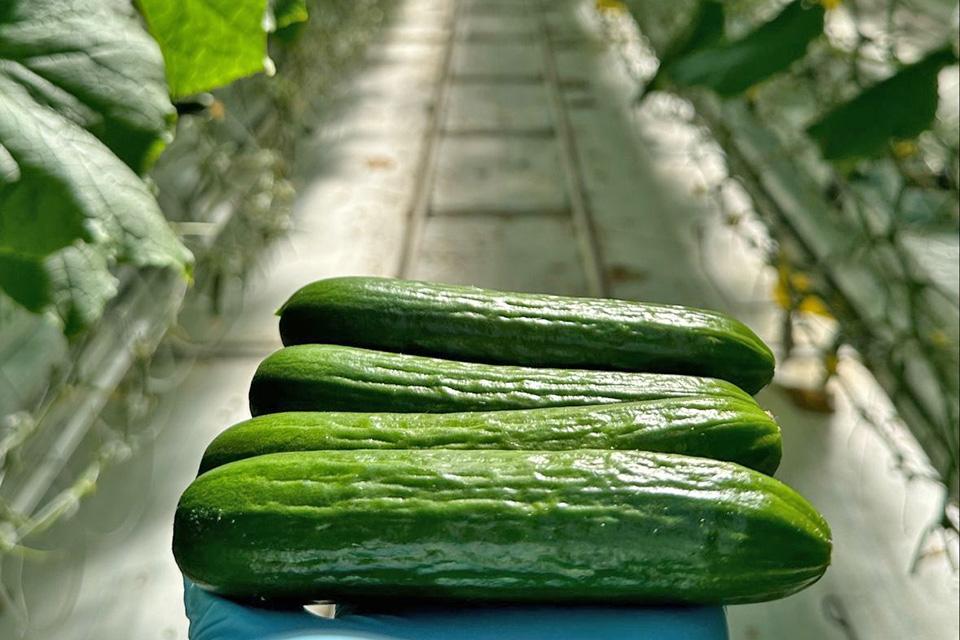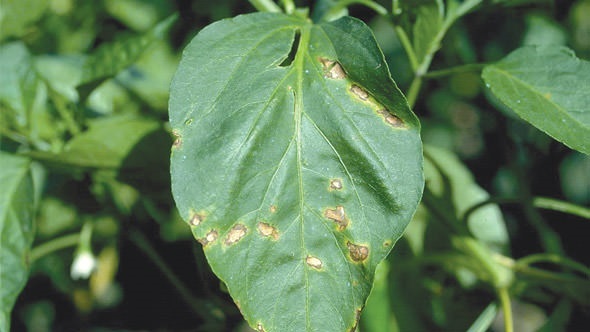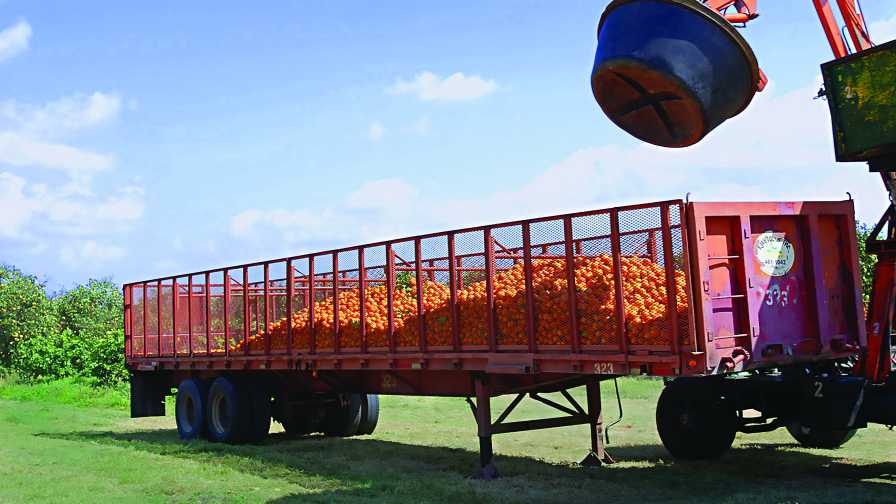Analyzing The Rise In Invasive Pests
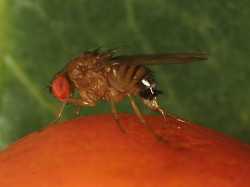
Editor’s Note: Some time ago, we were contacted by New York grower Mike Biltonen, who wanted to talk about the prevalence of invasions of exotic pests. After talking to Biltonen, we contacted some entomologists from some of the country’s prime fruit production regions, and what follows is a synopsis of what Biltonen and the entomologists had to say.
Mike Biltonen, Vice President of Production, Red Jacket Orchards, NY
Biltonen farms 600 acres of fruit in western New York, an hour west of Syracuse. Half of the acreage is devoted to apples, and on the other half they grow about 15 different crops, mostly stone fruits and berries. Along with the entomologists, Biltonen pins the blame on the increase in invasive pests on globalization. But he also wonders whether a changing climate — whatever the reason for it — is to blame. “They (invasive pests) couldn’t overwinter here in the past,” he says. “But we didn’t have much snow last winter (2011-12) at all.”
Biltonen didn’t pay much attention to spotted wing drosophila (SWD) when he first heard about it in 2010, largely because there was no record of it in Western New York. In 2011, researchers at Cornell University, which is located virtually right across the street from Red Jacket, put out some vinegar traps and caught a few SWD. The researchers caught a lot more in 2012, and then late that summer SWD “just blew up,” he said. “They destroyed our fall raspberry crop.” They won’t even try to grow a fall raspberry crop this year, he said.
Another new pest Biltonen hasn’t heard much about is a pest identified by Cornell entomologist Art Agnello: the white peach scale, which he saw on some plums for the first time last year. Normally more of a mid-Atlantic pest, it hit one high, relatively protected block hard. “The scale looked like snow,” he said. “There were some trees it killed, not a lot of them, but we’ll definitely keep an eye out for it this year.”
Some of the invasives are so new, such as SWD and brown marmorated stink bug (BMSB), that researchers haven’t had a chance to map out their whole life cycles, so growers really have it tough. “Farmers are going to have to become better biologists, frankly; we need more growers with background in biology and entomology,” said Biltonen, who has a master’s in pomology from Cornell. “We won’t see land grant university funding like we saw 20 years ago ever again, which means (private sector) guys like Brad Higbee (see below) will be leading the way.”
Growers are up against a trio of challenges when it comes to battling invasive insects, and it’s only going to get tougher, he predicts. “With the changing nature of chemistries getting softer, of climate change and globalization, we’re going to have more and more problems,” he concludes.
Art Agnello, Professor of Entomology, Cornell University, NY
There’s certainly no dearth of native pests to worry about, says Agnello, but because of globalization, the appearance of new invasive pests will soon become routine. “The way business is done with so much movement of goods and people around the world, it’s not an anomaly any more,” he says. “They hitchhike, they come on vehicles, loads of drainage pipes, etc. Any place can receive goods from just about any other place in the world.”
Unfortunately, growers are going to have to take a hard look at their operations because the appearances of invasive pests are no longer rare. For example, should crops favored by BMSB, such as peaches, tomatoes, or peppers, even be grown in the hard-hit mid-Atlantic region? “Those of us who are trying to ID tools to minimize their impact are doing the best they can, but that’s long term, and some of these guys can’t hold out that long,” says Agnello, which means growers must answer some tough questions such as: “Should I be in this part of the business if there’s going to be this type of liability?”
Growers, who Agnello says are naturally inquisitive, are also going to have to resist the urge to experiment with new plants from other regions. It’s just too risky today, because importing new plants can introduce new invasive pests and diseases. He cites the example of plum pox, which allegedly was imported from Europe by a Canadian nursery. “It might look good to experiment,” he says, “but there are risks that are unforeseeable.”
Brad Higbee, Research Entomologist, Paramount Farming, Bakersfield, CA
No question that there are more pests invading the U.S. today than ever before because of the global economy, says Higbee. All you have to do is look at the example of the Medfly. The pest has been eradicated on the West Coast several times, but each time it later flares up anew. “If you lay out a map and put a dot where the first detection is each time, you’ll soon see a pattern,” he says. “Generally around a big airport is where the dots are.”
Higbee, says that it seems clear we’re going to see more invaders as globalization isn’t slowing down any time soon. What isn’t clear is how the invaders will fare in the U.S., he says. For example, the light brown apple moth (LBAM) was first discovered in California — in the San Francisco Bay area, not far from an airport, notes Higbee — in 2007. Many people in agriculture were extremely concerned about what would happen if the pest spread to the state’s key agricultural areas. In fact, one prominent association chief questioned the future of many of the state’s fruit crops if the pest made its way to the fertile San Joaquin Valley.
Whether it was the yeoman’s work on the part of USDA, the California Department of Agriculture, or whomever, to this day the pest has not spread as feared. “You just never know how a pest from another continent will do under your conditions,” says Higbee.
Contrast that with the SWD. It appeared a year later than the LBAM, being first discovered in North America in Central California in 2008. Initially, officials didn’t think it would spread as quickly as LBAM because it was thought that the SWD could not take cold temperatures. But by the fall of 2010 it was found in Michigan, which is not known for a balmy climate, and today it’s a problem in virtually all areas of the continental U.S.
Elizabeth Beers, Professor of Entomology, Washington State University
A good example of the unpredictability of invasives is the contrast between apple maggot, which was first found on the coastal, west side of the Cascade Mountains in the 1980s, and SWD, which came on like a house of fire in 2010. “It (the apple maggot) has been moving at a snail’s pace by comparison,” she said. “So imagine our shock when SWD was — all of a sudden — detected everywhere.”
One of her greatest concerns regarding invasives is that the IPM programs so carefully — and successfully — developed through the years are under siege. After all, it wasn’t that long ago that apple growers would put on several cover sprays of Guthion. Today, with pheromone mating disruption, they use none. But pheromone mating disruption doesn’t look promising with BMSB. “It runs directly counter to all of our efforts to put together a stable IPM program because it’s not amenable to soft approaches,” she says. “Any pest that attacks fruit directly or feeds internally is a real problem for us.”
BMSB isn’t the only threat to IPM programs in the Pacific Northwest, says Beers, where growers have been producing more and more cherries. “In cherries, SWD really upset the IPM apple cart, because while we had GF-120 (Dow AgroSciences), which was effective on cherry fruit fly, it was only somewhat effective on SWD,” she says. “But on a direct pest, ‘somewhat’ isn’t good enough.”
As for what growers can do with these new alien invaders like BMSB, Beers says they absolutely need to keep informed and keep an eye out for them, encouraging everyone who walks to orchards and vineyards to be on alert. But don’t overreact. “Don’t spray for something that’s not established,” she says. “Wait until you see the whites of their eyes.”
Be Wary Of Biocontrol
Biocontrol is a preferred method of taking care of invasive pests, for obvious reasons. Indeed, for two of the most recent invasive pests to emerge as serious threats — brown marmorated stink bug and Asian citrus psyllid — many people think that biocontrol, such as the widespread introduction of a parasitoid, represents the only viable method. But it’s important to keep in mind that such a solution is not without risk.
Back in the 1970s, Brad Higbee had recently taken his first job as an entomologist with USDA’s Agricultural Research Service in Yakima, WA. If anything, biocontrol was even more in vogue back then, and Higbee found himself working on a project to control pear psylla. (Obviously, some pests just aren’t easy to defeat, as pear psylla remains a problem.)
His boss, Bob Fye, a well-known entomologist and a major proponent of biocontrol, had assigned Higbee to work with another entomologist, Ken Hagen, who was traveling through Asia collecting various ladybugs. “Ken was looking (for beneficial predators) in pear orchards all over the world,” says Higbee. “He studied them extensively in Asia.”
Hagen sent the ladybugs back to the U.S., where after being quarantined in Delaware, they were shipped up to Washington. Simultaneously, there were similar projects going on across the country, such as on soybean aphid in the Midwest. Ladybugs were considered the ideal predator, says Higbee. “After all,” he says, “what harm could a ladybug do?”
Higbee and Fye released the ladybugs — the species was multi-colored Asian lady beetle (Harmonia axyridis) — along the Oregon coast, in the Columbia Gorge and on up into Yakima. But all their efforts appeared to be in vain, because when they revisited the orchards, they couldn’t see much impact at all. “You might find one the same day or maybe the next,” says Higbee, “but other than that, they disappeared.”
He more or less forgot all about the project until many years later. In 1990, he got a call from a Washington State University Cooperative Extension agent over in Seattle who said he had numerous inquiries from people complaining about huge numbers of ladybugs. Though they’re not stinkbugs, if you get enough ladybugs in one place, they will put off quite an unpleasant aroma.
Higbee says he knew immediately it was Harmonia axyridis because the species is known for a lot of color morphs, such as black with red dots or orange with black dots (See photo.) On the plus side, it was tough to find an ornamental shrub with aphids in that part of the country, but to this day he wonders if the imported ladybugs replaced an existing species.
In any case, he and his fellow entomologists learned a valuable lesson: “Now we’re a lot more careful when we import beneficials.”
EGVM Eradication Money Requested
It may sound like an unusual strategy, what with sequestration recently becoming the word of the day in Washington, DC, but some in agriculture are arguing that when it comes to pests, it’s pay relatively little now — or pay a lot later.
The executive leaders of three of California’s statewide wine organizations sent a letter last month to USDA Secretary Tom Vilsack urging full funding of European Grapevine Moth (EGVM) eradication efforts for 2013. The request for $6.5 million in USDA funding was made by John Aguirre, president of the California Association of Winegrape Growers, Bobby Koch, president and CEO of the Wine Institute, and Paul Kronenberg, president of the Family Winemakers of California.
In the letter, the three leaders stated, “Under-funding eradication efforts this year will result in substantially more being paid in the long run to fund control activities and the prospect of serious, sustained damage to winegrape crops will hurt growers and wineries alike, greatly harming California’s economy.”
Last fall, a technical working group of international and domestic experts convened by USDA’s Animal and Plant Health Inspection Service, Plant Protection and Quarantine (APHIS PPQ) released a recommended eradication plan for 2013 that costs $8.2 million to implement. Officials with the California Department of Food and Agriculture (CDFA) have expressed their willingness to contribute $1.7 million toward that eradication plan, leaving a balance of $6.5 million for USDA to fund.
In 2010, USDA and CDFA imposed a regulatory EGVM quarantine affecting 2,334 square miles in California. Since then, a comprehensive, science-based eradication program has substantially diminished populations of EGVM. As a result, quarantine restrictions were lifted last year in seven counties, plus parts of Sonoma and Solano counties. Noting the success of eradication efforts, the three wine groups commented in their letter to Vilsack, “We hope you agree with us that $6.5 million in FY 2013 to fund continued eradication activities for EGVM is a high priority and fully merited by the program’s success.”




